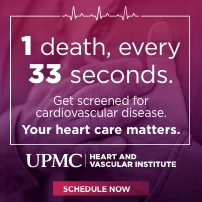April 6th, 2020 by WCBC Radio
Due to the challenging climate during the current coronavirus pandemic, UPMC Western Maryland has made a push in recent weeks to educate patients about the benefits of telemedicine, which is the practice of caring for patients remotely when the provider and patient are not physically present with each other.
“Depending upon the need, our providers have used either telephone or video technology to see patients safely and securely where they want to be seen,” said Jeff O’Neal Executive Director of Clinics and Practices, Behavioral Health at UPMC Western Maryland.
All providers (urgent care, primary care, specialists) have increased their use of virtual visits. Virtual visits provide continued access to care and keep the providers and staff in contact with patients, especially those who are more vulnerable and come with a higher risk. Virtual visits also provide for the clinical management of patients.
During the pandemic, all office visits that are routine, non-urgent and non-emergent should be completed via a virtual visit. “Our goal is to meet the needs of our patients without bringing them into the office unnecessarily,” O’Neal said, adding, “however, if the patient has symptoms that the provider does not feel can be addressed by telephone or video, an office visit is still appropriate.”
Across the nation, the coronavirus pandemic has put the spotlight on telemedicine, bringing it to areas that had previously seen limited use. “Prior to COVID-19, we used telemedicine pretty infrequently due to a combination of patient and provider preferences,” O’Neal said.
UPMC Western Maryland anticipates that the increased utilization of this technology will continue after the pandemic, as more patients will have experienced the convenience of virtual visits. For example, on March 31 alone, UPMC Western Maryland provided 231 virtual visits.
Telemedicine has many advantages. No travel is involved so it is more convenient for the patient, even without the current COVID-19 pandemic precautions, lowers the exposure of the patient to other viruses and illnesses.
The disadvantage is that not all patients have access to the technology (smartphone, tablet, PC) and bandwidth (broadband, WiFi, cellular data service) to support two-way audio and video. Any televisit solution requires the patient to download an app, which can be challenging for patients unfamiliar with the technology. “We try to make it as easy as possible to establish the visit, and UPMC Western Maryland providers and staff are ready and willing to assist with the virtual visit connections,” said Michael Barth, Information Technology Coordinator. “The process is made as convenient as possible.”
At UPMC Western Maryland, the patient downloads an app called VidyoMobile on their smartphone or can use a computer with a microphone and camera. The provider or their staff sends an email to the patient containing a link to the provider’s “room”. The patient simply clicks on the link, and the Vidyo software or app will automatically open and the patient is placed securely in the room with the provider.
It is important to remember that some conditions are easily handled virtually, but some conditions will always require a face-to-face visit. The UPMC Emergency Department remains fully functional at this time, and if an urgent care visit is needed, centers in South Cumberland, Frostburg and McHenry remain open seven days per week from 8 a.m. to 8 p.m.
“Our urgent care centers are also utilizing virtual visits where appropriate,” O’Neal said. “Patients are being asked to call the urgent care center first so that the appropriate care setting may be established.” For more information on telemedicine options, patients should consult their primary care provider.





.jpg)













